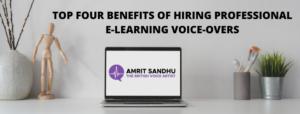Hey there, voiceover enthusiasts! So you’ve got the voice, the passion, and the drive to make it in the voiceover world. But before you start landing those big-time gigs, you need to make sure you’ve got the right tools for the job.
That’s right, we’re talking about voiceover equipment.
Now, I know what you’re thinking: “Do I really need all that fancy stuff?” Well, let me tell you, investing in quality equipment is like investing in yourself. It’s an investment in your future success. Think of it this way: You wouldn’t try to build a house without the right tools, would you? You wouldn’t try to bake a cake without a mixer, would you?
The same goes for voiceover. Having the right equipment will help you:
– Sound your best: A good microphone, pop filter, and headphones will capture your voice in its best light, reducing unwanted noise and improving clarity.
– Work efficiently: A dedicated recording space and software will streamline your workflow, allowing you to focus on delivering your best performance.
– Create professional-quality audio: High-quality equipment will help you produce audio that meets industry standards, making you a more attractive candidate for clients.
So, let’s dive into the essential voiceover equipment you need to get started:
1. The Microphone: Your Voice’s Best Friend
The microphone is the heart of your voiceover setup. It’s what captures your voice and transforms it into audio. There are a ton of different microphones out there, but for voiceover, you’ll want to focus on condenser microphones.
– Condenser Microphones: These microphones are known for their sensitivity and ability to capture a wide range of frequencies, resulting in a clear and detailed sound. They’re perfect for voiceover because they can pick up the subtle nuances of your voice.
– USB Microphones: These microphones are easy to use, as they plug directly into your computer. They’re a great option for beginners or those on a budget.
-XLR Microphones: These microphones offer the highest quality sound but require an audio interface to connect to your computer. They’re a great choice for professionals who want the best possible audio.
2. The Pop Filter: Say Goodbye to Plosives
Have you ever heard a voiceover with those annoying “pops” and “clicks” when the speaker says words like “pop” or “cat”? That’s because of plosives, which are bursts of air that occur when you pronounce certain sounds.
A pop filter is a must-have for any voiceover artist. It’s a mesh screen that sits in front of your microphone, catching those pesky plosives and preventing them from ruining your recording.
3. Headphones: Hearing is Believing
Headphones are essential for monitoring your audio while you’re recording. This way, you can hear exactly what you’re recording and make adjustments as needed.
– Closed-Back Headphones: These headphones block out external noise, ensuring that you can hear your audio clearly without distractions. –
Open-Back Headphones: These headphones offer a more natural sound, but they don’t block out as much noise. They’re a good choice if you want to be aware of your surroundings while recording.
4. Recording Software: Your Digital Studio
Recording software is what you’ll use to capture your voice, edit your audio, and export your finished product.
– Audacity: Audacity is a free and open-source audio editor that’s perfect for beginners. It’s packed with features and is easy to learn.
– GarageBand: GarageBand is a free audio editor available for Mac users. It’s a great option for beginners and offers a user-friendly interface.
– Adobe Audition: Adobe Audition is a professional-grade audio editor that offers a wide range of features. It’s a great choice for experienced voiceover artists.
5. The Recording Space: Your Soundproof Sanctuary
Your recording space is just as important as your equipment. You want a space that’s quiet, well-lit, and comfortable.
– Soundproofing: You can soundproof your space by using acoustic panels, rugs, and curtains to absorb sound.
– Minimizing Noise: Make sure to turn off any appliances or devices that could create noise, such as fans, air conditioners, or refrigerators.
– Comfort is Key: Make sure your recording space is comfortable and ergonomic.
So you’ve got the voice, and passion, and now you’ve got the tools! You’re ready to start building your voiceover career.
Remember, investing in quality voiceover equipment isn’t just about getting the best sound – it’s about investing in yourself and your future success. It’s about creating professional-quality audio that will impress clients and set you apart from the competition. It’s about having the confidence to know that you’re equipped to deliver your best performance, every time.
So, don’t be afraid to invest in yourself. Get that microphone, those headphones, and that recording software. Create a dedicated recording space that you can be proud of.
And most importantly, have fun! Voiceover is a creative and rewarding field and you can achieve your voiceover dreams with the right tools. 🎤


